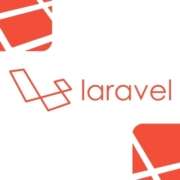How to create a VUE 2 Component?
Passing Data to Vue.js Components: A Beginner’s Guide
Vue.js components are the building blocks of any Vue application. They encapsulate reusable pieces of your UI, making your code more organized and maintainable. But how do you get data into these components? That’s where props come in!
In this article, we’ll explore how to pass data from a parent component (like a page) to a child component in Vue.js 2, using a simple example.
1. Create the Child Component
Let’s start by creating a simple component called MyComponent.vue:
Code snippet
<template>
<div>
<p>The value of myProp is: {{ myProp }}</p>
</div>
</template>
<script>
export default {
name: 'MyComponent',
props: {
myProp: {
type: String, // Or Number, Boolean, Array, etc.
required: true // Or false if the prop is optional
}
}
}
</script>
Explanation:
props: This option defines the properties that the component can receive from its parent. Here, we define a prop calledmyPropof typeString. We also setrequired: true, meaning the parent component must pass a value for this prop.
2. Use the Component in Your Page
Now, let’s use this component in a page (e.g., MyPage.vue):
Code snippet
<template>
<div>
<MyComponent :my-prop="pageVariable" />
</div>
</template>
<script>
import MyComponent from './MyComponent.vue';
export default {
components: {
MyComponent
},
data() {
return {
pageVariable: 'Hello from MyPage!'
};
}
}
</script>
Explanation:
- Import: We import the
MyComponentusingimport. - Register: We register the component in the
componentsoption. - Pass the Prop: We use
v-bind(or its shorthand:) to dynamically bind thepageVariablefrom the page’s data to themyPropprop ofMyComponent.
How it Works
When Vue renders MyPage, it sees the <MyComponent> tag and passes the value of pageVariable to the myProp prop. Inside MyComponent, we can then access this value as this.myProp and display it in the template.
Important Notes:
- One-Way Data Flow: Props are designed for one-way data flow from parent to child. If you need to modify the parent’s data from the child, you’ll need to use events (
$emit). - Prop Validation: You can add validation rules (like
type,required,default, and custom validators) to your props to ensure data integrity.
Conclusion
Props provide a clean and efficient way to pass data to your Vue.js components. By understanding how props work, you can build more modular and reusable components, leading to better organized and more maintainable Vue.js applications.






Leave a Reply
Want to join the discussion?Feel free to contribute!